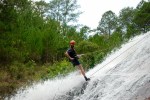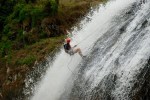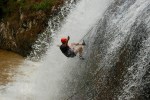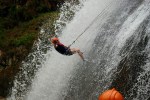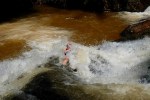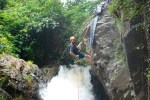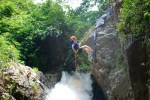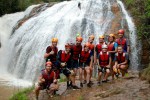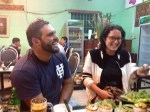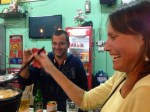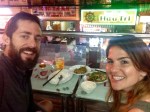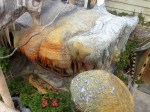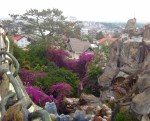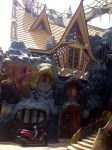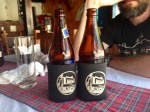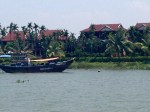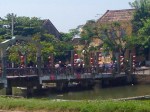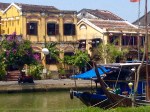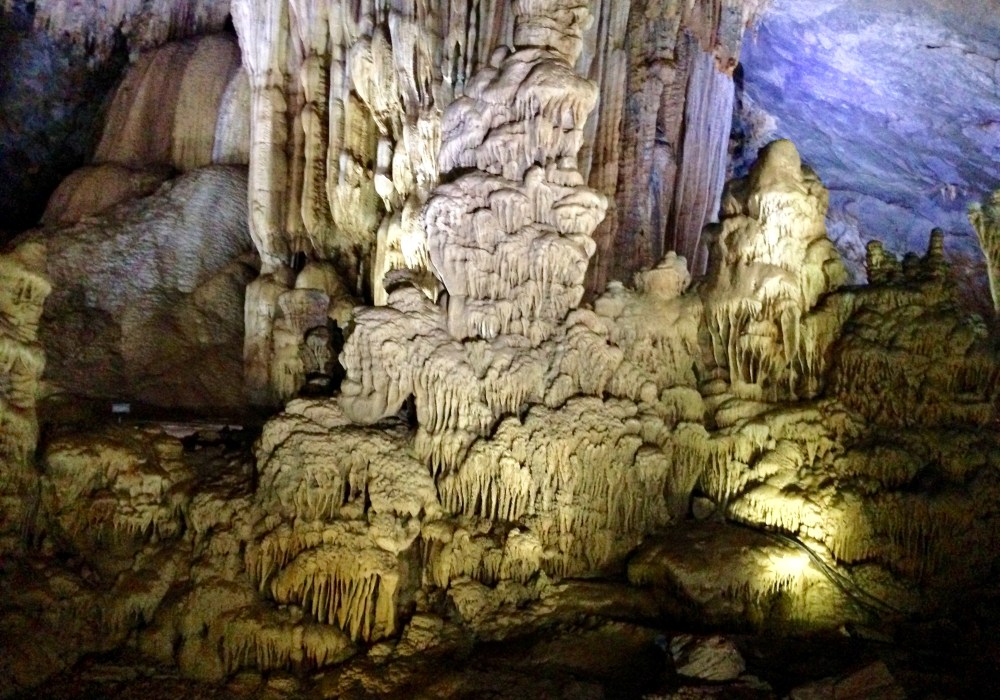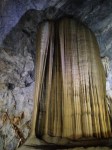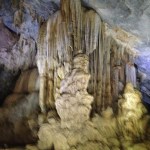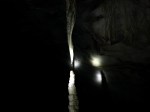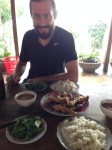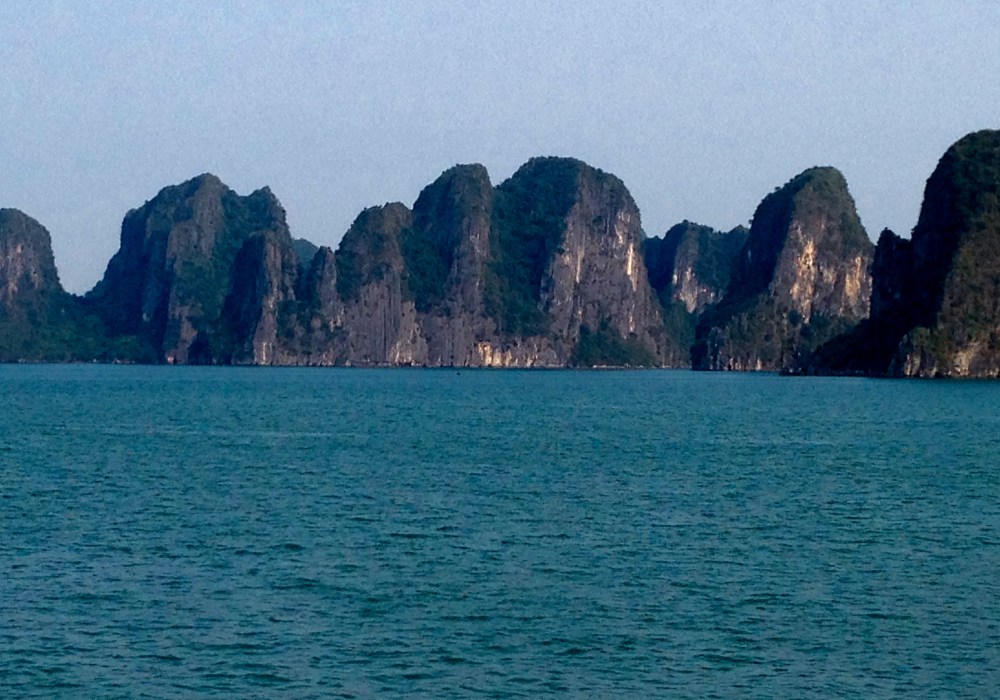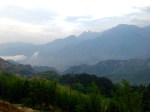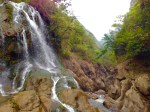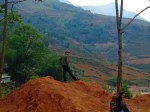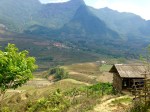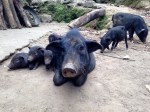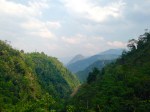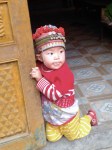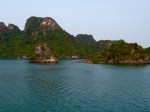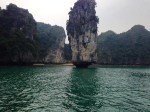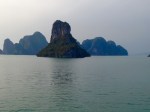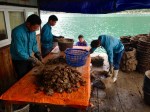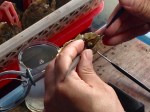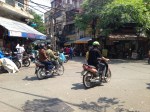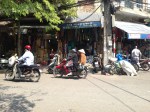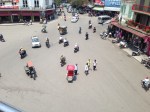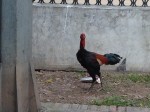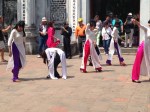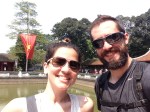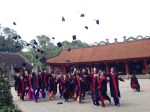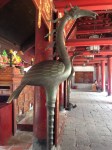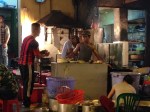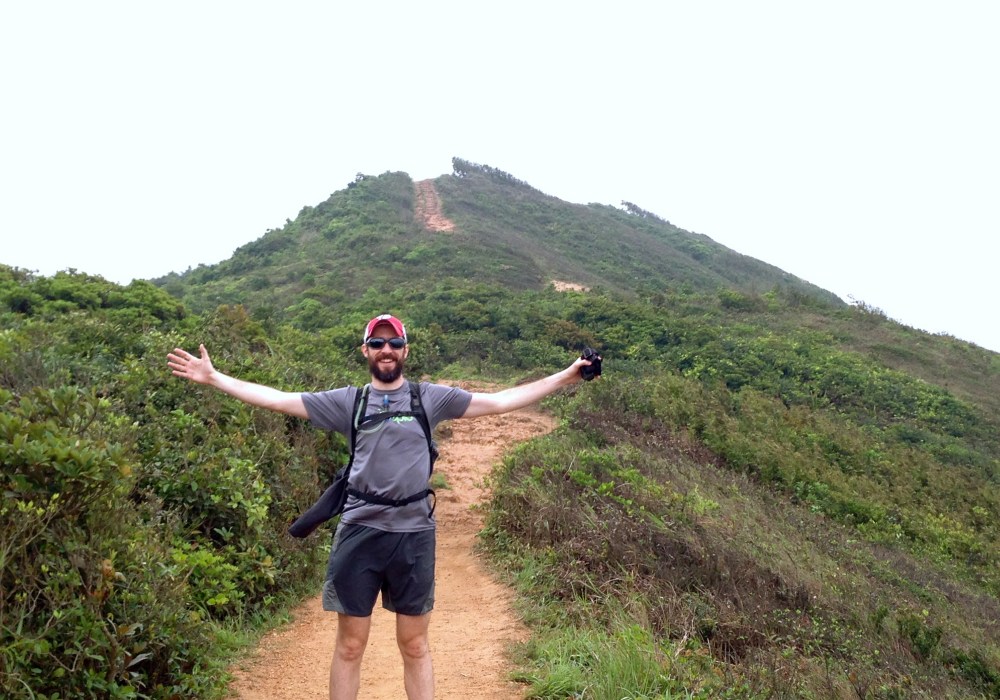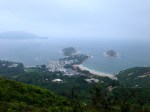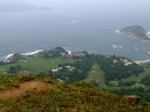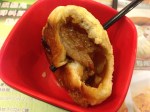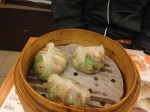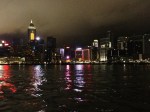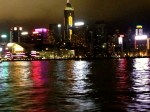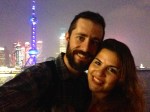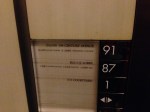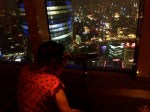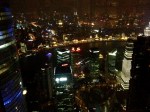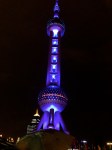
Canyons, a Crazy House, and Croissants
Dalat, Vietnam:
Greetings from the Future!
Our adventure in Vietnam during the celebration of the 40th anniversary of the fall of Saigon continues. As we were only able to book one night in a hotel in Hoi An, an abbreviated visit to this beach town eventually passed as there were absolutely no other hotels within 100 miles (I canvassed the city, I called people, I scoured the internet … nada), so we lit off for the Central Highlands. The French colonizers of Vietnam seem to have had the right idea about dealing with the climate: set up numerous, quaint, hill stations within access to the hotter lowland cities in order to get some respite from the oppressive heat. Dalat is one such place wherein the French built a hill station (See also our earlier trip to Sapa). The weather is mild, there are hills, colonial architecture … they grow strawberries … they make wine with said strawberries. It is gorgeous.
After hopping off the sleeper bus in Dalat , we went directly to the hotel I had booked. Despite booking a room and paying a deposit, we were out of luck. Keeping in mind that we went through a similar song-and-dance in Hoi An before hopping on a 20-hour bus ride, I reacted with some understandable ire. Four letter words and praise of the decisions of Robert Macnamera were employed along with much chest pounding. Things cooled in the conversation when I explained to the in-keeper that I would be keeping their family awake all night by drinking beer and eating soup in their den. While I was busy venting testosterone to non-English speakers, Maria found other lodging at “Backpacker’s Paradise,” which is run by a bunch of saints who agreed to give Maria a bed in their dorm and give me a cot on the floor. We were then bumped up to a private room the next night!
In all fairness to the hotel that reneged on our reservation, some people are born insufferable jerks who lie and steal as a matter of course.
That said, we bounced back and had a great time here!
After all of that excitement, what is there to do in Dalat?
Outdoor Stuff:
Vietnam’s healthy tourism circuit has numerous well-established locations for specific purposes: Hanoi is the capital and where you dodge mopeds and wave at McCain’s flight suit; you can check out the caves in Phong Nha, hill tribes in Sapa, the old capital in Hue with a “Forbidden City”, and you can buy yourself a cheap suit in Hoi An. Dalat is the outdoor recreation mecca of Vietnam. Numerous outfitters catering to the banana pancake eating, backpacker set are available for mountain biking, rafting, trekking to local villages, rock climbing, and canyoning.
Maria and I went with Highland Sport Travel on a canyoning trip. Part rappelling, part rock climbing, part whatever you call that thing where you jump off a cliff and swim around … this was tons of fun.
Highland Sport Travel’s guides exuded professionalism and inspired confidence among the wholly foreign group we were with. The idea of convincing people, in a second language, of the fact that, “hey … all this equipment works, and also you need to listen to my commands to stay safe,” seemed a daunting task but was handled perfectly. Most of the guides had studied English in college and all were attentive to the guests. The trip was a blast and the guides did a great job, even dedicating an additional guide to helping a 10-year-old German girl through some of the more interesting aspects of the trip. (That last sentence might make this trip seem decidedly less hardcore, but I should mention that this was an unusually brave 10-year-old whose father declined to jump off a cliff that his daughter hopped off. I’m imagining there was some awkward dinner conversation that followed in that family.)
We jumped off cliffs, rappelled down waterfalls, and generally had a great day. The entire trip — which took all day, included van transport to and from the canyon, a full lunch, and two guides per our eight person group — cost $25 per person.
Baked Goods:
The French left the people of Indochina with a bizarre legacy. You can find western toilets with these little spray-hose bidets attached in fairly rural bathrooms across the region. All of the countries of Indochina, as if in a middle finger to their previous colonizers, are communist (Cambodia has elections but the last time the Communist Party lost there was a violent coup, which assured that their Prime Minister, who has been in power since the late 80s, remained in power). Oh …and the baked goods.
While baguettes are on offer throughout Vietnam, I was suspect of cakes, cupcakes, and other desserts. Maria and I found an enormous bakery in downtown Dalat called Lien Hoa. For less than $5, we purchased enough cupcakes and chocolate filled products to give a small elephant diabetes. I’m not talking a dozen doughnuts. I’m talking, “let’s skip breakfast tomorrow,” kind of eating. It was glorious.
Dalat’s Crazy House:
Imagine, if you will, Pee Wee’s Playhouse during construction. A weird, mishmash of a tree-fort, cartoon imagery brought to life, and exposed rebar from walls where, most likely, the whole thing will be expanded. You can get lost here, and I’m sure you could fall and die here if you wandered around in the dark. The “Crazy House” is the design of Dang Viet Nga, a Russian educated, Vietnamese architect, whose designs have previously been destroyed for being interpreted as conveying anti-communist ideals. Interestingly, Dang Viet Nga’s father was Ho Chi Minh’s successor, which allowed for some liberal skirting of the rules with regards to building codes. It costs about two dollars to visit and is well worth a walk through.
Check out our photos from the activities mentioned above, as well as some pics from a hot-pot dinner out with some friends we made at Backpacker’s Paradise, including two Canadians, a New Zealander, a Finnish guy, an Argentine, and a Brazilian:

